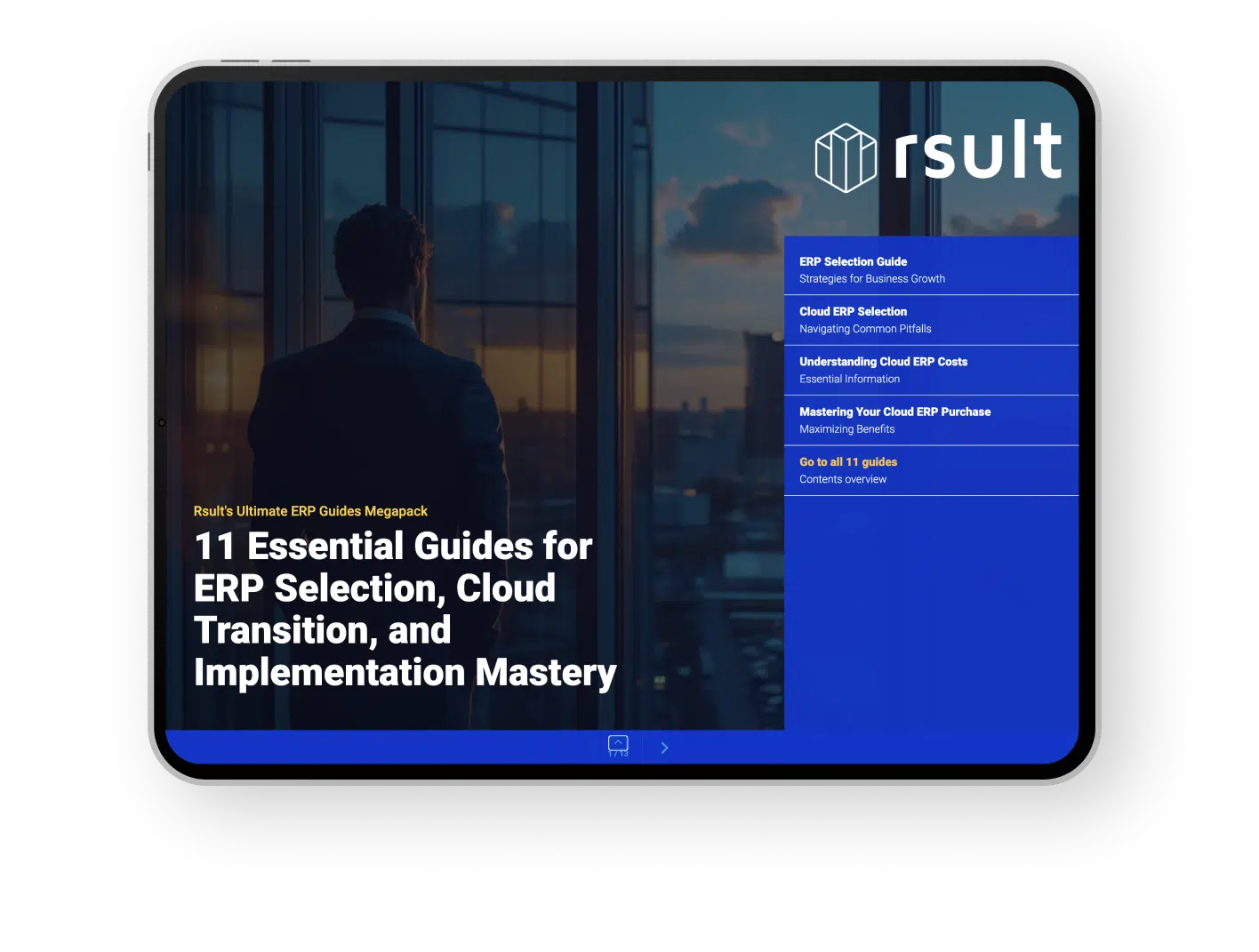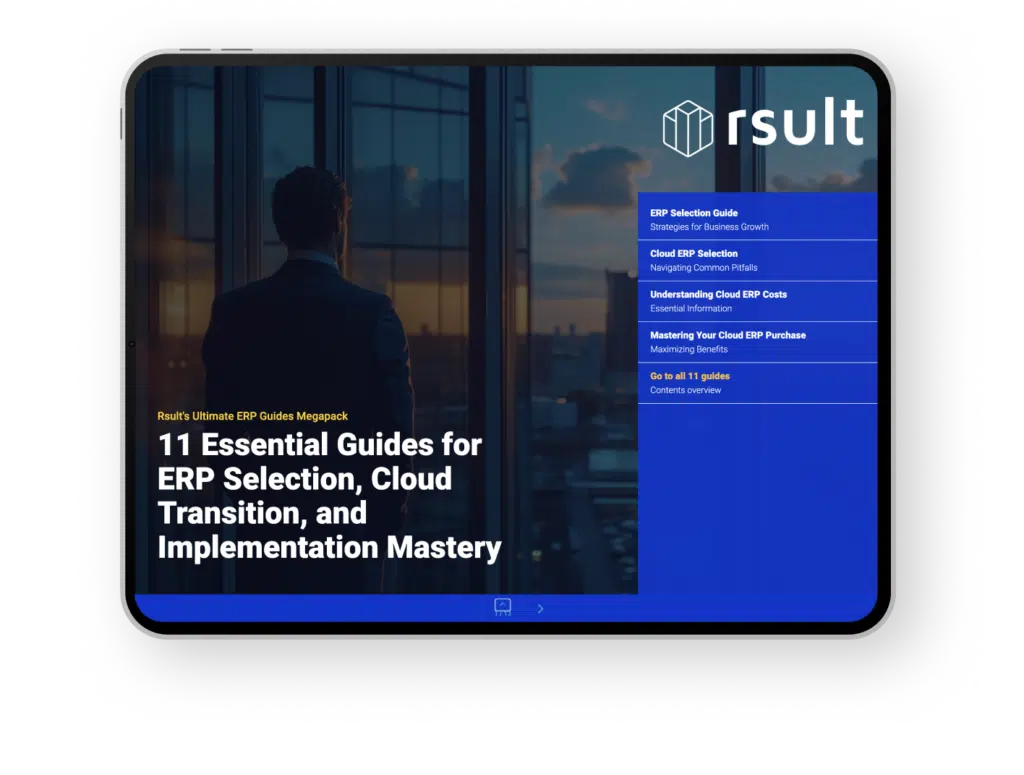As an architect, your ability to create and manage complex projects is critical, but what about the underlying business processes that keep the firm running smoothly? Imagine having a centralized system that not only boosts productivity but also offers you real-time analytics and insights. This is where ERP solutions for architectural firms come into play. By integrating functions such as project management, accounting, and human resources into a single framework, ERP systems for architecture are transforming the way architects work.
Whether you’re a small studio or a large firm, the efficiency brought by ERP implementation for architectural firms can be a game-changer. Your team could collaborate more effectively, and resource allocation can become easier to handle. Moreover, the advent of cloud-based ERP for architects ensures that these powerful capabilities are available to you anywhere, at any time. Let’s delve into how an ERP system can be tailored to fit your firm’s unique needs and help you stay ahead in a competitive industry.
Key Takeaways
- Understand the fundamental ways in which ERP systems streamline architectural business operations.
- Discover how real-time data and analytics can enhance productivity and decision-making.
- Learn about the versatility of cloud-based ERP solutions that allow for efficient collaboration and access.
- Explore the immediate advantages of implementing an ERP tailored to the needs of your architecture firm.
- Gain insights into how ERP systems support project management, finance, and compliance within the architectural industry.
Understanding ERP and Its Significance for Architects
Enterprise Resource Planning, or ERP, represents a significant paradigm shift in the way architectural firms manage their projects and operations. By transitioning to ERP software for architectural design, these firms can synchronize every facet of their business, from project conception to completion. Here, we’ll explore what ERP is and why it’s becoming essential in the architecture industry.
What is ERP?
ERP systems serve as the pivotal technology framework in an architectural firm, interlinking all processes and data across various departments onto a single cohesive platform. This integration facilitates improved workflow automation and data sharing—key components for robust architectural project management software. Think of ERP as the digital backbone that supports data-driven decision-making, accelerates project timelines, and optimizes resource allocation in architecture practices.
Why Choose ERP Over Traditional Methods?
The benefits of ERP in architecture extend far beyond just organization and efficiency. ERP solutions are pillars of innovation in project delivery, bringing accuracy and agility to operations that were once prone to error and fragmentation. By integrating ERP into your architectural firm, you establish a system that enhances coordination, elevates the accuracy of financial forecasting, and underpins strategic planning efforts with robust analytics.
| Traditional Methods | ERP Software Benefits |
|---|---|
| Isolated data systems | Centralized data repository |
| Manual data entry and reporting | Automated, real-time reporting |
| Inconsistent project management | Streamlined project management workflows |
| Limited insights into business health | Comprehensive analytics for informed decision-making |
| Delayed communication between departments | Immediate access to cross-departmental information |
Navigating the Types of ERP: Cloud-based vs On-Premise
When you’re deciding on ERP solutions for architectural firms, it’s essential to understand the fundamental differences between cloud-based ERP and on-premise ERP systems. Each has its benefits and considerations, and your choice can significantly impact the efficiency and scalability of your operations.
Cloud-based ERP for architects is an attractive option due to its flexibility and lower upfront costs. These systems are managed by the providers, assuring that maintenance, updates, and security are taken care of, allowing you to focus on your architectural projects without the technical overhead. Moreover, you can access these solutions anywhere, at any time, as long as you have an internet connection.
In contrast, on-premise ERP systems are installed on your own servers and managed by your IT team. This might offer greater control over customization, but it also entails a higher initial capital investment and ongoing maintenance costs. Additionally, on-premise solutions can make remote access more challenging, which could inhibit the mobility that today’s architects often require.
| Features | Cloud-based ERP | On-Premise ERP |
|---|---|---|
| Initial Cost | Lower | Higher |
| Accessibility | Anywhere with internet | Local network dependent |
| Maintenance & Updates | Provider managed | Self-managed |
| Customization | Limited by provider options | Highly customizable |
| Security | Provider responsibility | Your responsibility |
| Data Control | Hosted off-site | Hosted on-site |
While each firm’s needs will vary, the trend is clearly favoring cloud-based systems. According to recent studies, over 60% of organizations are now opting for cloud-based ERP for architects due to its overall cost effectiveness and ease of management. However, if you seek a tailored approach and have the resources for ongoing maintenance, an on-premise ERP could be a viable solution.
As you navigate the ERP landscape, consider the long-term growth and specific requirements of your architectural firm. The goal is to select an ERP solution that not only fits your current needs but also scales to meet future challenges. Whether cloud-based or on-premise, a well-chosen ERP can lead to remarkable efficiencies and a robust platform for your business processes.
Key Features to Consider When Selecting Architect ERP Software
Embarking on an ERP implementation for architectural firms involves selecting a software that not only meets your current needs but also supports your firm’s growth. To ensure you opt for the most effective ERP software for architectural design, there are specific features to prioritize. Let’s take a closer look at integration and compatibility, customization, and user experience, ensuring that these intricate systems support, rather than challenge, the distinct needs of your architectural practice.
Integration and Compatibility
A successful ERP software should seamlessly integrate with your firm’s existing systems. The right solution streamlines processes, consolidates data, and enhances the productivity of your teams. Here are some of the practical considerations:
- Common web-based database for universal access
- Robust APIs for easy information exchange with third-party tools
- Compatibility with standard architectural software and applications
Customization and User Experience
Each architectural firm operates distinctly, which is why customization of ERP software is indispensable. The goal is to tailor the system to your firm’s processes, not the other way around, ensuring an intuitive user experience:
- Customizable dashboards that cater to different roles within the firm
- Flexible modules that can be customized to your project requirements
- User-friendly design with consistent UI across all modules and tools
Furthermore, aligning your choice with top-tier customer service and robust training resources will maximize adoption and productivity within your firm.
| Feature | Benefit | Consideration for Architectural Firms |
|---|---|---|
| Built-in Analytics | Real-time project insights and KPI tracking | Enables proactive decision-making and performance monitoring |
| Regulatory Compliance Tools | Ensures projects meet industry standards | Reduces risk of non-compliance and enhances reputation |
| AI and Machine Learning Capabilities | Automates and improves accuracy of predictions | Streamlines operations and provides strategic insights |
| Robust Security Measures | Protection of sensitive data and IP | Instills confidence in both the firm and its clients |
| Scalability | Ability to grow with your business | Prevents future system overhauls and supports expansion |
Choosing the right ERP software for architectural design is more than a technical decision; it’s a business one. As you consider ERP implementation for architectural firms, remember that the best solution will feel like a seamless extension of your work, fostering a more integrated, efficient, and innovative practice. After all, your ERP software should not only keep pace with your firm’s evolution but also propel it forward.
Enhancing Project Management with Architectural ERP Solutions
As you strive to manage your architectural projects more effectively, incorporating architectural project management software is a strategic move. With an integrated ERP system, designed specifically for architecture, you achieve seamless collaboration across various domains such as sales, order management, finance, HR, and accounting; all while utilizing a single platform. This approach mitigates redundancy and significantly reduces the risk of siloed, outdated information.
Architectural ERP solutions stand out by offering unparalleled transparency throughout every stage of your project’s lifecycle. Your ability to monitor resources and swiftly adjust to project alterations is enhanced, ensuring that both schedules and budgets are consistently maintained. Let’s explore how ERP systems for architecture can be indispensable to your project management process:
- Centralized Data Management: Instead of juggling multiple software systems, all project-related data is centralized, leading to increased efficiency and accuracy.
- Resource Tracking: Keeping a close eye on resources has never been easier, as ERP software streamlines the allocation and tracking process.
- Budget Control: With real-time financial data, staying on top of project budgets helps in preventing overruns.
- Schedule Adherence: Advanced planning tools within ERP systems aid in preventing delays and keeping the project on track.
Perusing the following table will give you an insight into how ERP systems for architecture can transform your project management from good to great:
| Feature | Benefits |
|---|---|
| Real-Time Analytics | Enables quick decision making with up-to-date project metrics. |
| Integrated Communication Tools | Facilitates efficient information exchange between teams and stakeholders. |
| Automated Workflow | Reduces manual entry errors and saves valuable time on repetitive tasks. |
| Comprehensive Reporting | Provides detailed reports for a clearer understanding of project status. |
| Forecasting Tools | Assists in predicting potential project roadblocks and planning accordingly. |
| Scalability | Adapts to the size and complexity of any project, growing with your business. |
Imagine the impact of having all these capabilities at your fingertips, empowering you to deliver projects with stellar proficiency. By embracing ERP systems for architecture, you position your business at the forefront of innovation, ready to meet the demands of any client and project with confidence and skill.
The Strategic Advantages of ERP Solutions for Architectural Firms
As a professional within an architectural firm, you understand the complexity of navigating multiple projects with precision and efficiency. ERP solutions for architectural firms have become integral in shaping the industry’s landscape by offering numerous strategic advantages. Explore how these systems can transform your day-to-day operations and contribute to your firm’s competitive edge.
Automating Complex Tasks
The use of ERP solutions in your architectural firm can streamline your workflow by automating complex tasks that traditionally consume substantial time and resources. From scheduling to compliance management, ERP systems are designed to handle a plethora of demanding tasks swiftly and accurately. Witness the benefits that automation brings to your practice, such as consistent coding of time entries, which ensures the accuracy of billing and minimizes financial discrepancies.
Centralized Data for Informed Decision Making
Imagine having instant access to a wealth of information, all at your fingertips. ERP solutions for architectural firms consolidate data across various business functions, providing a single source of truth. This centralized access empowers you to make well-informed decisions, backed by data-driven insights. With real-time financial, sales, customer management, and workforce analytics in one place, your ability to strategize and execute plans effectively is significantly enhanced.
| ERP Feature | Benefits for Architectural Firms |
|---|---|
| Project Management Automation | Streamlines project timeline and resource allocation |
| Financial Tracking | Improves billing accuracy and reduces revenue leakage |
| Real-time Analytics | Enables proactive decision-making with current data |
| Centralized Database | Facilitates information sharing and reduces errors |
| Customer Relationship Management | Enhances client satisfaction with organized data access |
Employing ERP solutions for architectural firms ushers in a revolution not only in how you manage projects but also how you perceive the benefits of ERP in architecture. These solutions are tailored to meet the intricate needs of the sector, promising streamlined operations, better data accuracy, and resource optimization that collectively contribute to the success and sustainability of your architectural practice.
Financial Management and Risk Reduction with ERP Systems
As an architect, you understand the significance of precision and efficiency in every aspect of your work, and this extends to the vital arena of financial management. **ERP for Architects** is engineered to simplify complex financial tasks, providing you with a robust framework for overseeing your firm’s economic health. An **ERP implementation for architectural firms** equips you with tools to meticulously track and manage your financial data, helping to reduce risk and enhance your decision-making process.
In the realm of financials, ERPs allow you to monitor every transaction with unprecedented accuracy—from the general ledger to accounts payable and receivable, as well as comprehensive budgeting processes. With these advanced systems, generating detailed financial reports becomes routine, facilitating risk identification before it becomes a tangible problem. Moreover, ERP integration contributes to efficient resource management and offers predictive analytics to keep your projects on track and profitable.
- General Ledger Tracking: Gain real-time insight into your firm’s financial status.
- Accounts Management: Keep tabs on payments due and manage cash flow with ease.
- Budget Control: Develop and adhere to financial plans, ensuring profitability.
- Payroll Processing: Streamline HR obligations, managing salaries and benefits efficiently.
- Risk Management: Leverage predictive analytics to anticipate and mitigate project risks.
| Financial Feature | Benefits |
|---|---|
| Real-time Financial Reporting | Quick access to financial data for strategic decision-making |
| Risk Analysis Tools | Proactive risk identification and mitigation strategies |
| Regulatory Compliance | Ensure financial practices meet industry standards |
| Resource Allocation | Project profitability aligned with precise resource management |
| Project Cost Tracking | Visibility on project expenses for better financial control |
By implementing an ERP system, your architectural firm is not just participating in industry trends, but actively preparing for a future where streamlined financial management is the norm. This technology is not a mere addition but an integral component that fortifies the foundations of architectural practice, ensuring that your creativity is complemented by financial stability and growth.
Improving Client Relationships Through Effective ERP Implementation
The core of any successful architectural firm is the strength of its client relationships. Implementing a robust ERP system is more than an upgrade to your operational capabilities; it’s an investment in client satisfaction and service excellence. By centralizing communication and project data, your firm can achieve new levels of transparency and responsiveness that clients will value.
Client Communication and Data Management
With ERP systems for architecture, you ensure consistent and accurate information flows between your team and your clients. The software becomes a single source of truth, eliminating the chaos of disjointed emails and spreadsheets. Whether it’s project timelines, budgeting, or design changes, the information is at your fingertips, allowing you to keep clients in the loop at every stage of their project.
- Streamlined communications through centralized platforms
- Real-time updates and access to project status
- Secure sharing of documents and design iterations
Fostering Trust with Transparency
Trust is the foundation of any client relationship. Transparency through an ERP software for architectural design fosters this trust by providing clients with unfiltered access to project data. This visibility empowers clients, making them feel more connected to the process and reassured by the oversight they have over their investments.
- Complete transparency on project progress and financials
- Easily accessible data logs for client review
- Clear documentation of compliance with industry standards
The client-focused features of modern ERP software can transform how your architectural firm conducts business. Embrace the technology to deepen client trust, streamline project management, and drive your business forward with confidence.
ERP for Architects: Adapting to Regulatory Standards and Compliance
For architects, navigating the complex landscape of regulatory standards and compliance is integral to the success of any project. The benefits of ERP in architecture extend into this realm, offering advanced features designed to manage and simplify these obligations. An ERP for Architects provides a suite of tools to ensure that every design and construction initiative adheres to the pertinent legal requirements and safety standards, thus safeguarding your firm against the risk of non-compliance.
As architectural projects evolve, so do the regulations and codes that govern them. Implementing an ERP system ensures that your firm stays current with changes in legislation, incorporating updates directly into your project management workflow. This real-time compliance feature means you can focus your efforts on design and innovation, confident that your ERP solution is handling the complexities of compliance.
| ERP Functions | Benefits |
|---|---|
| Code Compliance Tools | Assures projects meet industry regulations |
| Safety Standards Integration | Minimizes risk of workplace incidents |
| Real-time Legislative Updates | Keeps projects aligned with current laws |
| Audit Trail Capabilities | Ensures project accountability and traceability |
| Documentation Control | Organizes all compliance-related documents for easy retrieval |
With an ERP system, your firm can also cultivate a deeper trust with clients and stakeholders, as it promotes transparency throughout the project lifecycle. This trust is established through consistent compliance with industry standards, showcasing your firm’s commitment to excellence and attention to detail. It’s clear that when it comes to meeting and maintaining regulatory standards, an ERP solution is an indispensable asset for your architectural practice.
Transformation of Resource Planning and Budgeting in Architecture
As an architect, you’re well aware of how critical resource planning and budgeting are to the success of your projects. With the advent of ERP solutions for architectural firms, these complex tasks have been transformed, offering you greater control and precision. Let’s break down how ERP can refine your firm’s operations.
Firstly, the right ERP implementation for architectural firms will introduce clarity to your projects. It’s about seeing the big picture and the minute details simultaneously—understanding where materials are being allocated, tracking how staff hours are used, and gaining insights into your cash flow.
ERP systems excel in adapting to the fluctuations of architecture projects. When client requirements shift or unexpected challenges arise, a robust ERP system adapts rapidly, enabling you to make adjustments on the fly without compromising the project’s budget or timeline.
- Visualizing Projects: Gain a clear perspective on the project’s scope and progress.
- Material Allocation: Ensure materials are ordered and used efficiently to avoid waste.
- Human Resources Management: Allocate the right personnel to the right tasks at the right time.
- Financial Oversight: Monitor expenses closely to stay within budget while maintaining quality.
Consider your firm’s ERP as the financial command center, where every cost is logged, every resource is accounted for, and every project’s financial health is transparent. This level of integration is what sets ERP apart, making it an indispensable tool for your firm.
| Resource | Without ERP | With ERP |
|---|---|---|
| Materials | Potential for overordering | Just-in-time ordering and reduced waste |
| Staffing | Ad-hoc allocation | Strategic deployment based on project needs |
| Budget | Reactive corrections | Proactive adjustments with real-time data |
| Time Tracking | Inconsistent entries | Uniform and accurate recording |
| Expense Management | Manual reconciliation | Automated matching and reporting |
Ultimately, the benefits of ERP implementation for architectural firms are clear and compelling. You’ll notice improvements in efficiency, agility, and precision in resource planning and budgeting tasks. Embrace the transformative power of ERP, and watch as your architectural firm reaches new heights of operational excellence and project delivery success.
Understanding the ROI of ERP Implementation in Architectural Practices
When you invest in ERP software for architectural design, you’re not just buying a product; you’re investing in a transformative tool for your business. The cost might seem hefty upfront, but the ROI of ERP systems in architecture comes from the long-term efficiency and the client satisfaction you’ll achieve. Imagine having all your project data, financials, and communication channels housed in one system, readily accessible to streamline your practice’s operations.
Assessing the ROI of your ERP investment involves quantifying benefits such as time savings, error reduction, and project delivery improvements. To provide a clearer understanding, here’s a breakdown of how an ERP system can financially benefit your architectural firm:
| ROI Factor | Benefits | Impact |
|---|---|---|
| Project Delivery |
|
Increased client trust and repeat business |
| Operational Efficiency |
|
Lower operational costs and resource optimization |
| Client Satisfaction |
|
Improved reputation and service quality |
| Data-Driven Decisions | Consolidated real-time data access | Better strategic planning and market responsiveness |
Your choice to implement an ERP solution tailored for architectural needs signals dedication to not just maintaining industry standards, but exceeding them. With ERP systems designed for architecture, your firm will be well-equipped to keep up with project demands while managing your resources effectively.
Conclusion
As architects, you stand at the forefront of shaping the future, balancing aesthetics with functionality. A key part of maintaining that balance is the backend systems that drive your operations. ERP software for architectural design isn’t just a tool; it’s an integral component that anchors your practice, offering comprehensive benefits of ERP in architecture. In a landscape that’s always in flux, these solutions provide the resilience and flexibility required to adapt and thrive.
Preparing Your Firm for Future Growth with ERP
The integration of an ERP system into your firm lays a solid foundation for scaling up and pursuing new market opportunities. With functionalities tailored to streamline project management, sharpen financial control, and optimize operations, you’re better positioned to handle the increasing complexity that accompanies growth. As technology progresses, the strategic move towards an ERP system ensures you are not just keeping pace but are also a step ahead, ready to seize future advancements.
The Final Verdict: Is ERP Right for Your Architectural Firm?
Your firm’s blueprint for success increasingly requires digital reinforcement, and the choice of an ERP solution reflects a commitment to excellence and forward momentum. Integrating ERP offers a unified view of your firm’s pulse – projects, finances, and resources – and enhances decision-making, ultimately advancing client satisfaction and business outcomes. For an architectural firm poised for growth and distinction, an investment in ERP software is not merely a consideration; it is the next logical step in your firm’s evolution.
FAQ
What is an ERP system for architects?
An ERP (Enterprise Resource Planning) system for architects is a comprehensive software platform designed to manage and streamline various business operations within an architectural firm. It integrates essential functions like project management, financial management, human resources, supply chain, and client relationship management into one central system, providing real-time insights and analytics to enhance productivity and decision-making.
What are the differences between cloud-based and on-premise ERP solutions?
Cloud-based ERP solutions for architects are hosted online and can be accessed through the Internet, with the provider responsible for maintenance and security. On-premise ERP solutions, on the other hand, are installed locally on the firm’s own servers and managed in-house. Cloud-based ERP systems are generally more cost-effective and easier to access and maintain compared to on-premise systems.
How does ERP software improve project management for architectural firms?
ERP software for architectural design integrates various project management tools that help architects track project progress, resources, budget, and schedules in real time. By centralizing data and processes, the software enhances collaboration among team members and departments, reduces inefficiencies, and allows for quick adaptation to project changes, which helps in maintaining schedules and budgets.
What strategic advantages do ERP solutions offer to architectural firms?
ERP solutions automate complex and time-consuming tasks, provide centralized data for informed decision-making, and minimize revenue leakage. These systems support financial management, enhance client satisfaction, and facilitate better resource management and risk management within architectural firms, leading to more effective project completion and strategic business decisions.
What key features should architectural firms look for when selecting ERP software?
When selecting an architect ERP software, firms should look for key features such as integration with existing systems, customization options, user-friendly interfaces, scalability, real-time analytics, robust security measures, and compliance tools. The ability to track KPIs, adapt to AI and machine learning, and provide excellent customer support and training resources are also important considerations.
How can effective ERP implementation improve client relationships for architects?
Effective ERP implementation enhances client communication by providing a single platform for managing all client-related data and interactions. It ensures greater transparency, fostering trust with clients by consistently delivering projects on time and within budget. Also, by maintaining compliance with regulatory standards, ERP systems help architectural firms avoid legal issues and reinforce client confidence.
Why is financial management crucial in ERP systems for architecture?
Financial management is a critical component of ERP systems for architects as it helps in tracking all financial transactions, including general ledger, accounts payable and receivable, and budgeting processes. This provides accurate financial reporting, enables risk identification and avoidance, and supports comprehensive HR functions such as payroll and time tracking, all of which contribute to the firm’s bottom line and sustainability.
How does an ERP system for architects ensure adherence to regulatory standards and compliance?
ERP systems for architects often include regulatory compliance tools that help ensure designs and construction activities align with legal requirements and safety standards. These systems keep track of regulatory changes and assist firms in staying compliant, thus mitigating the risk of legal complications and upholding the trust of clients and stakeholders.
Can ERP solutions transform resource planning and budgeting in architecture?
Yes, ERP solutions can dramatically improve resource planning and budgeting by providing a clear and accurate overview of project data. This allows architects to allocate materials, manpower, and finances more efficiently and respond swiftly to changes in project scope or requirements, ultimately enhancing operational capability and project outcomes.
What is the ROI of implementing an ERP system in an architectural firm?
The ROI of implementing an ERP system in an architectural firm includes long-term efficiency gains, improved project delivery, and increased client satisfaction. While there may be initial costs involved, these are generally offset by the benefits of streamlined operations, better management, and reduced error rates, all contributing to the firm’s overall success and profitability.
How does incorporating an ERP system prepare an architectural firm for future growth?
Incorporating an ERP system equips an architectural firm for future growth by improving efficiency, project management, and financial control. As the industry evolves, having an ERP system in place means the firm can easily adapt to new technologies, market demands, and business practices, ensuring they remain competitive and can capitalize on new opportunities.






